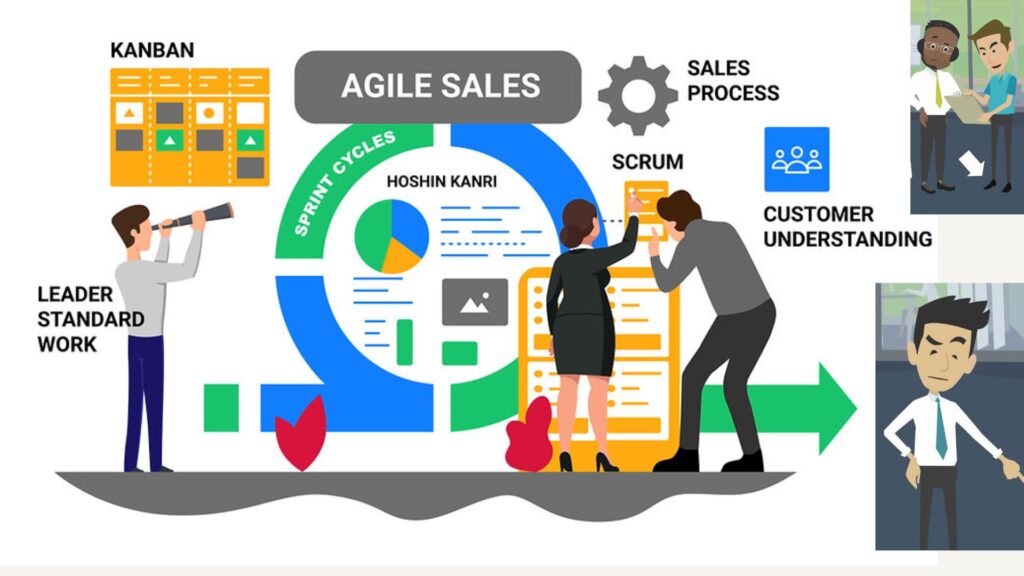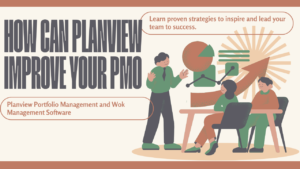Table of Contents
Introduction:
In the fast-paced world of project management, staying up to date with the latest trends is not just a preference; it’s a necessity. The field of project management is constantly evolving, and those who fail to keep pace with the changes may find themselves at a disadvantage. In this blog post, we’ll delve into the significance of staying updated with the latest trends in project management for 2023, emphasizing the dynamic nature of this field and why staying current is absolutely crucial.
Key Points:
- Rapid Evolution: Project management is not a static discipline. New technologies, methodologies, and strategies emerge regularly. For instance, consider how Agile methodologies disrupted traditional project management approaches in the last decade, leading to more adaptive and customer-centric practices.
- Competitive Advantage: Staying current with the latest trends provides a competitive edge. Organizations that embrace innovative project management approaches are often more agile, efficient, and better positioned to deliver successful projects on time and within budget.
- Competitive Advantage: Staying updated gives you a competitive edge by leveraging the latest tools and methodologies.
- Efficiency and Productivity: Trends often focus on enhancing efficiency and productivity, which can directly impact project success.
- Risk Mitigation: Being aware of trends allows you to adapt to new risks and challenges more effectively.
- Client Satisfaction: Meeting or exceeding client expectations requires implementing the latest trends for better outcomes.
- Professional Development: Continuous learning and adaptation are crucial for career growth in project management.
Example:
Imagine a project manager who remains unaware of the latest trends in project management for 2023. They continue to use outdated methods and tools, unaware that their competitors have adopted AI-driven project management software, embraced remote work strategies, and implemented hybrid project management methodologies. As a result, they may struggle to meet project goals efficiently, while their competitors enjoy improved project outcomes and client satisfaction.
In contrast, a project manager who stays informed about the latest trends is more likely to integrate AI tools for predictive analytics, allowing for better resource allocation and risk management. They may leverage remote work solutions to access a global talent pool, improving team diversity and project flexibility. Such a project manager is well-prepared to adapt to changing circumstances and deliver projects that align with modern expectations.
In summary, the world of project management is in a constant state of flux. Remaining updated with the latest trends is not just about keeping pace; it’s about gaining a competitive advantage, embracing innovation, and ensuring project success in the ever-evolving landscape of 2023 and beyond.
Remote Project Management: Navigating the Future of Work
The Rise of Remote Work in Project Management
The way we work has undergone a profound transformation in recent years, and remote work has become an integral part of this evolution. The global pandemic of 2020 accelerated the adoption of remote work, but this trend is far from a temporary solution. Remote work is here to stay, and it’s significantly shaping the landscape of project management.
Key Points:
- Ubiquitous Shift: The COVID-19 pandemic forced organizations across the globe to embrace remote work, leading to a widespread and lasting shift in work culture.
- Enhanced Flexibility: Remote work offers unparalleled flexibility, allowing project managers to tap into a global talent pool and accommodate diverse work preferences.
- Cost Savings: Reduced office space and commuting costs translate into substantial savings for both organizations and employees.
- Challenges: Managing remote teams presents unique challenges related to communication, collaboration, and team cohesion.
Facilitating Effective Remote Project Management
Remote project management, while promising, requires specific tools and techniques to ensure projects stay on track and teams remain connected.
Key Techniques:
- Communication Tools: Utilize a combination of messaging apps (e.g., Slack), video conferencing platforms (e.g., Zoom), and email to maintain regular communication. Clearly define communication protocols to ensure everyone is on the same page.
Example: Daily stand-up meetings via video conferencing allow team members to share updates and discuss roadblocks, fostering transparency and alignment.
- Collaboration Platforms: Leverage collaboration tools like Microsoft Teams, Trello, or Asana to centralize project information, track tasks, and facilitate document sharing. These platforms enable real-time collaboration and transparency in task management.
Example: Using a project board in Trello, team members can visually track tasks, assign responsibilities, and update progress in real time.
- Cloud-Based Project Management Software: Invest in cloud-based project management software (e.g., Microsoft Project, Smartsheet) that enables teams to access project plans, timelines, and resources from anywhere with an internet connection.
Example: With cloud-based software, team members can update project statuses, access important documents, and collaborate on tasks regardless of their physical location.
- Performance Metrics: Implement key performance indicators (KPIs) and performance tracking tools to monitor progress, identify bottlenecks, and make data-driven decisions.
Example: Regularly reviewing KPIs related to project timelines, budget adherence, and task completion rates helps project managers proactively address issues.
- Cybersecurity Measures: Prioritize cybersecurity to protect sensitive project data. Use secure VPNs, multi-factor authentication, and encryption protocols to safeguard information.
Example: Encrypting project-related emails and files ensures that sensitive data remains confidential and secure during remote communication.
Conclusion
The rise of remote work has transformed the way project management is conducted. Embracing this change and implementing the right tools and techniques for remote project management is crucial for success in today’s dynamic work environment. Remote work offers flexibility, cost savings, and access to a diverse talent pool, but it also requires a proactive approach to communication, collaboration, and cybersecurity to ensure projects stay on course.
Artificial Intelligence and Automation in Project Management
Streamlining Project Management with AI and Automation
In the era of digital transformation, artificial intelligence (AI) and automation are revolutionizing various industries, and project management is no exception. These technologies are increasingly being harnessed to streamline project management processes, enhance decision-making, and improve overall efficiency.
Key Points:
- AI’s Role: AI systems can analyze vast datasets, predict project risks, optimize resource allocation, and automate routine tasks, enabling project managers to focus on strategic aspects.
- Automation Benefits: Automation reduces human error, accelerates repetitive tasks, and ensures consistency, all of which contribute to better project outcomes.
Examples of AI-Powered Project Management Tools and Their Benefits
- Wrike’s AI-Powered Predictions:
- Benefit: Wrike uses AI to predict potential project delays or resource shortages based on historical data and current project variables. This allows project managers to take proactive measures to mitigate risks and keep projects on track.
- Monday.com’s Workflow Automation:
- Benefit: Monday.com offers a visual workflow automation tool that simplifies complex project processes. It automates repetitive tasks like sending notifications, updating statuses, and assigning responsibilities, reducing manual workload.
- Trello’s Butler Automation:
- Benefit: Trello’s Butler automation feature allows users to create custom automation rules. For example, when a task is moved to the “Completed” column, it can automatically archive the card, reducing clutter and maintaining a clean project board.
- Asana’s Task Assignment Recommendations:
- Benefit: Asana’s AI-driven task assignment feature suggests the most suitable team members for specific tasks based on their past performance and workload. This ensures that tasks are distributed efficiently.
- Zoho Projects’ AI-Powered Chatbot:
- Benefit: Zoho Projects integrates an AI-powered chatbot that can answer project-related queries, provide status updates, and retrieve project information quickly. This saves project managers time and enhances accessibility for team members.
- Clarizen’s Predictive Analytics:
- Benefit: Clarizen uses predictive analytics to identify potential bottlenecks and project risks early in the planning phase. This empowers project managers to make data-driven decisions and allocate resources effectively.
Conclusion
AI and automation have become indispensable tools for project managers seeking to optimize processes, boost productivity, and ensure project success. By harnessing AI-powered project management tools and automation features, project managers can streamline workflows, reduce errors, and allocate resources more efficiently. These technologies are not only changing the way projects are managed but also enhancing the overall quality and predictability of project outcomes.
Hybrid Project Management Approaches: The Best of Both Worlds
The Popularity of Hybrid Project Management Methodologies
Project management methodologies have traditionally fallen into two main categories: Waterfall and Agile. However, as organizations strive to adapt to the evolving business landscape, the hybrid project management approach is gaining traction. Hybrid methodologies combine elements of both Waterfall and Agile to create a flexible and tailored approach that suits the unique needs of a project.
Key Points:
- Adaptability: Hybrid methodologies offer the adaptability needed to address changing project requirements, making them attractive to organizations in dynamic industries.
- Risk Management: By blending the structured planning of Waterfall with the iterative nature of Agile, hybrid approaches help organizations manage risks more effectively.
- Customization: Organizations can tailor hybrid methodologies to align with their specific project goals, timelines, and team dynamics.
Combining Agile, Waterfall, and Other Methods in Hybrid Approaches
- Initial Planning (Waterfall Component):
- Example: In the initial phase of a software development project, a detailed project plan is created using Waterfall principles. This plan outlines project scope, budget, and timelines.
- Iterative Development (Agile Component):
- Example: After the initial planning, Agile practices are introduced. The project is broken into iterations or sprints, allowing for frequent testing, feedback, and adjustments.
- Regular Review (Hybrid Adaptation):
- Example: A hybrid approach incorporates regular review points where project teams assess progress. This allows for course correction while maintaining a structured framework.
- Continuous Communication (Agile Component):
- Example: Agile principles emphasize continuous communication among team members and stakeholders. In a hybrid approach, regular stand-up meetings and open channels of communication are encouraged.
- Risk Assessment and Mitigation (Waterfall Component):
- Example: At various stages, a hybrid approach leverages Waterfall’s risk assessment techniques to identify potential issues and devise mitigation strategies.
- Flexibility in Scope Changes (Agile Component):
- Example: When scope changes are necessary due to evolving requirements, Agile practices facilitate flexibility in accommodating these changes without derailing the entire project.

Benefits of Hybrid Approaches
- Adaptive Planning: Hybrid methodologies enable organizations to adapt to changing circumstances while maintaining a structured project framework.
- Improved Risk Management: By blending Waterfall’s comprehensive planning with Agile’s iterative nature, risks are identified and addressed proactively.
- Customization: Hybrid approaches can be customized to suit the unique needs of each project, allowing organizations to choose the most appropriate tools and techniques.
- Enhanced Collaboration: Regular communication and collaboration, inherent in Agile, help teams work cohesively and stay aligned with project goals.
Conclusion
Hybrid project management methodologies are becoming increasingly popular as organizations seek to strike a balance between structure and adaptability. By combining the strengths of both Waterfall and Agile, hybrid approaches empower organizations to manage projects more effectively, respond to change, and deliver successful outcomes tailored to their specific needs.
Data-Driven Decision Making in Project Management: The Power of Analytics
The Importance of Data Analytics in Project Management
In today’s data-rich environment, project management has evolved beyond intuition and experience-driven decision-making. Data analytics has emerged as a pivotal tool that empowers project managers with valuable insights, enabling them to make informed decisions and enhance project planning and execution.
Key Points:
- Informed Decision-Making: Data analytics equips project managers with the information needed to make decisions based on evidence rather than gut feeling.
- Risk Mitigation: By identifying trends and patterns, data analytics helps project managers proactively address potential risks and challenges.
- Performance Improvement: Data-driven insights enable project managers to continually optimize processes, leading to improved project performance.
How Data-Driven Insights Improve Project Planning and Execution
- Accurate Resource Allocation:
- Example: Data analytics tools can analyze historical project data to determine which resources are most efficiently utilized and where adjustments may be needed. This ensures optimal resource allocation.
- Predictive Forecasting:
- Example: Through trend analysis, data-driven insights can predict project bottlenecks or delays. Project managers can take pre-emptive actions to keep the project on track.
- Risk Identification and Mitigation:
- Example: Data analytics can identify patterns of past project failures or risks, allowing project managers to implement proactive mitigation strategies.
- Quality Control:
- Example: Data-driven quality control measures track the frequency of defects or issues during project execution. Project managers can identify areas for improvement and implement corrective actions.
- Performance Monitoring:
- Example: Real-time dashboards powered by data analytics provide project managers with up-to-date information on project progress and performance metrics. This ensures quick responses to deviations from the plan.
- Resource Optimization:
- Example: By analyzing resource utilization data, project managers can adjust staffing levels or reallocate resources to balance workloads effectively.
Benefits of Data-Driven Decision Making
- Enhanced Accuracy: Data-driven decisions are grounded in factual information, reducing the risk of errors associated with subjective judgments.
- Improved Efficiency: Data analytics streamlines processes and identifies areas where improvements can be made, leading to more efficient project execution.
- Cost Savings: Early identification of issues and proactive risk mitigation can lead to cost savings by preventing costly project delays or failures.
- Increased Stakeholder Confidence: Data-driven project management inspires confidence among stakeholders, as decisions are based on empirical evidence.
- Continuous Improvement: Data analytics supports a culture of continuous improvement, allowing project managers to refine processes for better future projects.
Conclusion
Data analytics has become an indispensable tool in modern project management. By harnessing the power of data-driven insights, project managers can make informed decisions, proactively address challenges, and continually optimize project planning and execution. This approach not only improves project outcomes but also positions organizations for long-term success in an increasingly data-driven business environment.
Sustainable Project Management: Balancing Success with Responsibility
The Rising Focus on Sustainability in Project Management
Sustainability has become a central concern in today’s project management landscape. With growing environmental awareness and the need to address global challenges, organizations are increasingly incorporating sustainable practices into their project management methodologies. This shift reflects a broader recognition of the importance of responsible project management.
Key Points:
- Environmental Responsibility: Sustainable project management aims to reduce the environmental impact of projects and minimize resource consumption.
- Long-Term Viability: Sustainable practices focus on achieving project goals without compromising the needs of future generations.
- Stakeholder Expectations: Stakeholders, including customers and investors, are increasingly demanding eco-friendly and socially responsible projects.
How Sustainable Practices Reduce Environmental Impact and Enhance Corporate Responsibility
- Resource Efficiency:
- Example: Sustainable project management involves optimizing resource usage, reducing waste, and minimizing energy consumption. This lowers the project’s carbon footprint and contributes to a healthier environment.
- Renewable Energy and Materials:
- Example: Projects can incorporate renewable energy sources and environmentally friendly materials. For instance, using solar panels or recycled building materials can significantly reduce environmental impact.
- Environmental Impact Assessments:
- Example: Sustainable projects often begin with comprehensive environmental impact assessments to identify potential risks and mitigation strategies. This ensures responsible decision-making.
- Stakeholder Engagement:
- Example: Sustainable project management includes engaging stakeholders, including local communities and environmental organizations, to gather input and address concerns. This fosters corporate responsibility and transparency.
- Lifecycle Assessment:
- Example: Sustainable practices consider the entire project lifecycle, from planning and construction to operation and decommissioning. This ensures long-term environmental responsibility.
- Compliance with Regulations:
- Example: Sustainable project management adheres to environmental regulations and standards, avoiding legal and reputational risks.
Benefits of Sustainable Project Management
- Environmental Preservation: Sustainable practices contribute to preserving natural resources, reducing pollution, and protecting ecosystems.
- Cost Savings: Efficient resource usage often leads to cost savings over the project’s lifecycle.
- Enhanced Reputation: Organizations committed to sustainability build a positive reputation and attract socially responsible stakeholders.
- Compliance and Risk Mitigation: By adhering to environmental regulations and addressing potential risks, organizations reduce legal and financial risks.
Conclusion
Sustainable project management is no longer a niche concept; it’s a necessity. Projects that incorporate sustainable practices not only reduce their environmental impact but also uphold corporate responsibility. Embracing sustainability not only benefits the planet but also enhances an organization’s reputation, ensures compliance, and often leads to cost savings, making it a win-win for both project managers and society at large.
Diversity, Equity, and Inclusion (DEI) in Project Teams: Fostering Innovation and Collaboration
The Role of Diversity in Project Teams
Diversity within project teams goes beyond ethnicity and gender; it encompasses a wide range of perspectives, experiences, and backgrounds. Embracing diversity in project teams fosters innovation, enhances problem-solving, and leads to more inclusive decision-making processes.
Key Points:
- Innovation Catalyst: Diverse teams bring together individuals with varying viewpoints and approaches, spurring creativity and innovation.
- Enhanced Problem-Solving: Different perspectives lead to more comprehensive problem-solving, as team members consider a wider range of solutions.
- Improved Decision Making: Inclusive teams tend to make more well-rounded decisions, reducing the risk of overlooking critical factors.
Strategies for Promoting DEI within Project Management
- Diverse Recruitment:
- Example: Implement inclusive hiring practices to attract a diverse pool of project team members. Focus on skills and potential rather than traditional qualifications.
- Inclusive Leadership:
- Example: Ensure project leaders actively encourage diverse voices to be heard, making it clear that all perspectives are valued.
- Training and Awareness:
- Example: Provide diversity and inclusion training to project teams. This can help team members recognize their biases and foster a more inclusive atmosphere.
- Diverse Stakeholder Engagement:
- Example: Engage stakeholders from various backgrounds and perspectives to ensure the project considers a wide range of interests.
- Regular Feedback Loops:
- Example: Encourage team members to provide feedback on inclusivity and diversity within the project team. Use this feedback to make improvements.
- Promote Mentorship and Sponsorship:
- Example: Establish mentorship programs to support the professional development of underrepresented team members. Sponsorship involves advocating for team members’ career growth within the organization.
- Accountability and Metrics:
- Example: Set measurable goals for diversity and inclusion within project teams and regularly track progress. Hold project leaders accountable for meeting these targets.
Benefits of DEI in Project Teams
- Enhanced Innovation: Diverse teams are more likely to generate innovative ideas and approaches.
- Broader Skillsets: Diverse teams often bring a broader range of skills and expertise to the project.
- Improved Problem-Solving: A variety of perspectives leads to more comprehensive problem-solving.
- Better Decision Making: Inclusive teams tend to make more well-rounded decisions, reducing the risk of overlooking critical factors.
- Higher Engagement: Inclusive environments lead to higher levels of engagement and job satisfaction among team members.
Conclusion
Diversity, equity, and inclusion are not just buzzwords; they are essential elements of effective project management. Embracing diversity within project teams not only fosters innovation but also leads to more comprehensive problem-solving and better decision-making. By implementing strategies to promote DEI within project management, organizations can create more inclusive and successful projects while fostering a culture of equity and respect.
Cybersecurity in Project Management: Safeguarding Project Data
The Significance of Cybersecurity in Project Data Protection
In today’s interconnected digital landscape, cybersecurity is a critical aspect of project management. Protecting project data from cyber threats and breaches is paramount to ensuring the confidentiality, integrity, and availability of project information. The consequences of a data breach can be severe, including financial losses, damaged reputation, and project delays.
Key Points:
- Confidentiality: Protecting sensitive project data, such as budgets, timelines, and proprietary information, is vital to maintaining a competitive edge.
- Integrity: Ensuring the accuracy and reliability of project data is crucial for informed decision-making.
- Availability: Project teams must have uninterrupted access to essential data and resources to keep projects on track.
Best Practices for Securing Project Management Systems and Data
- Access Control:
- Example: Implement robust access controls to ensure that only authorized individuals have access to project data and systems. Use role-based access to limit privileges based on job responsibilities.
- Encryption:
- Example: Encrypt project data, both in transit and at rest. This safeguards information from interception during transmission and protects stored data from unauthorized access.
- Regular Updates and Patch Management:
- Example: Keep project management software, operating systems, and security software up to date. Apply patches promptly to address known vulnerabilities.
- Multi-Factor Authentication (MFA):
- Example: Enforce MFA for access to project management systems. This adds an extra layer of security by requiring multiple forms of verification.
- Security Awareness Training:
- Example: Train project team members on cybersecurity best practices. Educate them about the risks of phishing, social engineering, and other common threats.
- Regular Backups:
- Example: Perform regular backups of project data to ensure data recovery in case of data loss or ransomware attacks.
- Incident Response Plan:
- Example: Develop and regularly test an incident response plan. This plan outlines the steps to take in the event of a cybersecurity incident, to minimize potential damage.
- Vendor Risk Assessment:
- Example: Assess the cybersecurity practices of third-party vendors providing project management tools or services. Ensure they meet security standards.
- Data Classification:
- Example: Classify project data based on its sensitivity. Apply appropriate security measures based on data classification, focusing more on highly sensitive data.
- Regular Security Audits:
- Example: Conduct regular security audits and penetration testing to identify vulnerabilities and assess the effectiveness of security measures.
Benefits of Cybersecurity in Project Management
- Data Protection: Cybersecurity measures safeguard sensitive project data from unauthorized access or breaches.
- Business Continuity: Effective cybersecurity ensures uninterrupted project operations, preventing costly disruptions.
- Reputation Management: Strong cybersecurity practices enhance an organization’s reputation by demonstrating a commitment to data protection.
- Risk Mitigation: Proactive cybersecurity reduces the risk of data breaches, financial losses, and legal liabilities.
Conclusion
Cybersecurity is not an option but a necessity in project management. It is crucial for protecting project data, ensuring project continuity, and upholding an organization’s reputation. By implementing best practices for securing project management systems and data, project managers can effectively safeguard project information and maintain the confidentiality, integrity, and availability of crucial data throughout the project’s lifecycle.
Resilience and Risk Management in Project Management: Adapting to Uncertainty
The Need for Increased Resilience in Project Management
In today’s volatile and uncertain global environment, resilience has become a key attribute of successful project management. The increasing prevalence of unforeseen disruptions, such as natural disasters, economic shifts, and global crises like the COVID-19 pandemic, underscores the need for projects and organizations to be adaptable and resilient.
Key Points:
- Uncertainty in a Globalized World: Globalization and interconnectedness mean that events in one part of the world can have far-reaching impacts, introducing new layers of uncertainty.
- Resilience as a Competitive Advantage: Resilient organizations and projects can better withstand disruptions and adapt quickly, giving them a competitive edge.
- Expect the Unexpected: Projects should anticipate and prepare for unexpected challenges, as unpredictability is the new normal.
How Risk Management Strategies Are Evolving in Response
- Scenario Planning:
- Example: In addition to traditional risk assessments, project teams now engage in scenario planning, creating contingency plans for various potential disruptions.
- Agile Project Management:
- Example: Agile methodologies, which emphasize adaptability and iterative development, are increasingly used to manage projects in uncertain environments.
- Diversified Supply Chains:
- Example: Projects are diversifying their supply chains to reduce reliance on single sources, mitigating the impact of supply chain disruptions.
- Data-Driven Risk Assessment:
- Example: Advanced data analytics and predictive modeling are employed to identify emerging risks and proactively manage them.
- Resilience Building:
- Example: Resilience is no longer an afterthought but a core aspect of project planning. This includes building redundancy, flexibility, and adaptability into project designs.
- Continuous Monitoring:
- Example: Projects now employ continuous monitoring of external factors that could affect their success, allowing for real-time adjustments.
- Collaboration and Stakeholder Engagement:
- Example: Collaborative risk identification and mitigation efforts involve stakeholders at all levels, leveraging collective intelligence to manage uncertainties.
Benefits of Increased Resilience and Evolving Risk Management
- Adaptability: Resilient projects can quickly pivot to address unexpected challenges, minimizing disruptions.
- Reduced Vulnerability: Evolving risk management strategies help projects become less vulnerable to external shocks.
- Enhanced Decision-Making: Data-driven risk assessment and scenario planning lead to better-informed decision-making.
- Sustainable Success: Resilience and adaptive risk management contribute to long-term project success even in uncertain environments.
Conclusion
Resilience and adaptive risk management are essential components of modern project management. Given the increasing complexity and uncertainty of the global landscape, projects that prioritize resilience and employ evolving risk management strategies are better positioned to thrive in the face of unexpected disruptions, ensuring successful project outcomes even in challenging times.
Conclusion: Embracing the Project Management Trends of 2023
As we step into 2023, the field of project management is undergoing significant transformations to adapt to a rapidly changing world. Staying informed and adaptable in this dynamic environment is paramount. Here are the key trends in project management for 2023 and why you should incorporate them into your strategies:
1. Embrace Technology Advancements: Technology continues to drive project management innovation, with AI, automation, and data analytics leading the way. Harness these tools to streamline processes, improve decision-making, and enhance efficiency.
2. Hybrid Project Management: The blending of Agile and Waterfall methodologies in hybrid approaches is gaining popularity. Embrace flexibility while maintaining structure to address the unique needs of your projects.
3. Sustainability Focus: Sustainable project management is no longer optional; it’s a responsibility. Implement eco-friendly practices to reduce environmental impact and demonstrate corporate responsibility.
4. Diversity, Equity, and Inclusion (DEI): Foster inclusive project teams to promote innovation and ensure a broader range of perspectives in decision-making. DEI is essential for project success and organizational growth.
5. Cybersecurity Priority: Protect project data from cyber threats and breaches by implementing robust cybersecurity measures. Data security is critical to maintaining project integrity.
6. Data-Driven Decision Making: Leverage data analytics for informed decision-making, risk mitigation, and improved project planning and execution. Data is your competitive advantage.
7. Resilience and Risk Management: In a world of uncertainty, resilience is key. Evolve risk management strategies to adapt to unforeseen disruptions and build projects that can withstand challenges.



